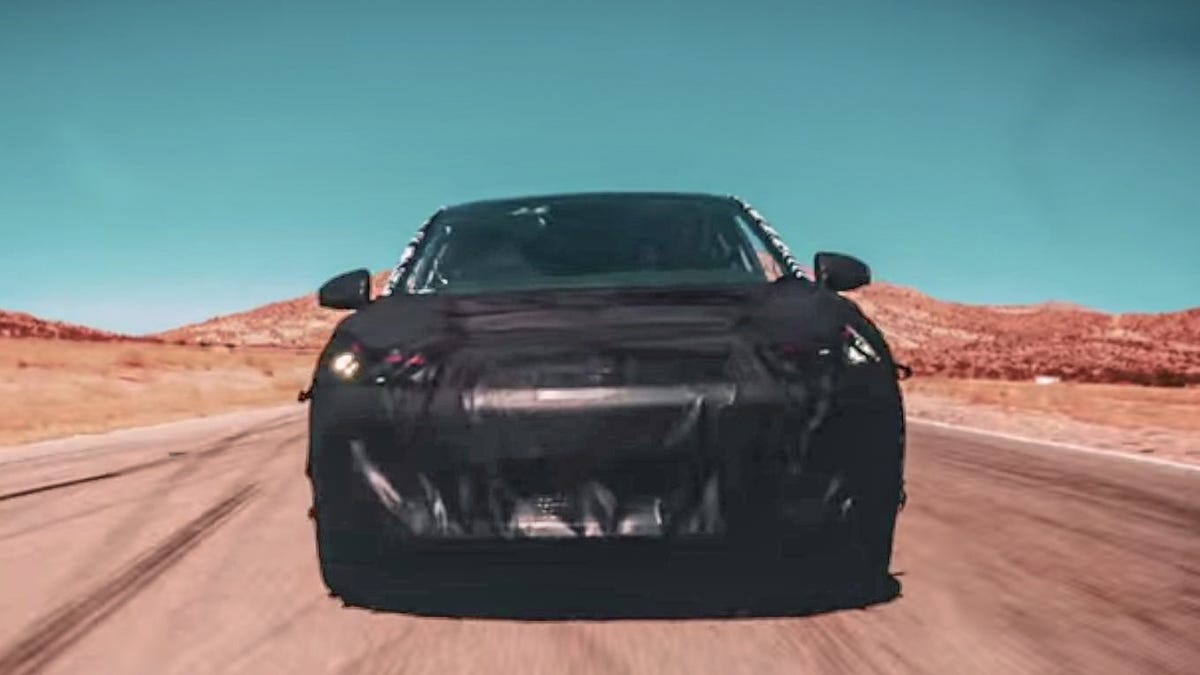Faraday Future electric car almost breaks cover in video
Upcoming Tesla competitor Faraday Future posted video today of what we expect to be its first electric production car, covered in camouflage ahead of its official unveiling in January at CES.

In a video posted online today, Faraday Future highlights the fact that its upcoming production car runs very quietly, not particularly noteworthy as it is an electric vehicle. However, the video also gives a look at the car's design, although camouflage over the body makes picking out details difficult.
A far cry from the FFZero1 concept shown at CES earlier this year, the testing car looks like a crossover or wagon, with a large windshield and roofline maintaining height towards the rear.
Faraday Future built up anticipation at CES as a potential Tesla competitor, notable for its deep-pockets backing from Chinese streaming-video company LeEco. During LeEco's North American launch event in San Francisco this month, the company highlighted Faraday Future and said that its first production car would be shown at CES 2017. A new electric car company could increase consumer choice and add to mainstream acceptance, with ripple effects of improving public charging infrastructure.
The video looks to have been shot at a proving ground in the California desert, east of Faraday Future's Gardena, California location. The video is titled "Can't hear the engine?", with footage showing the car running quietly at speed.
The car appears to have a low, curved nose, reminiscent of the Porsche Cayenne design. As an electric car, space at the front of the Faraday Future vehicle would mostly house the front suspension. Oddly, headlights visible through the camouflage appear to be conventional high-intensity discharge lamps rather than more energy-efficient LEDs.
The Faraday Future car shown testing here appears to be an electric crossover or wagon.
The roofline runs straight back to what could be a rear hatch, and large side windows are consistent with a crossover. If Faraday Future's first vehicle is a crossover, it would join the Tesla Model X as the only electric vehicles of this type. The popularity of the crossover segment and this type of vehicle's size, allowing it to hold a large battery pack, makes sense for a new production electric vehicle.
However, there is the possibility that the video merely shows a mule, a car being used just to test the electric drivetrain, and not the actual production car. Against that possibility is the camouflage, something the company would likely not bother with for a mule.
We expect to see Faraday Future unveil its production car at CES in January.
The front end of the Faraday Future car, although heavily clad, shows a low, curved hood.

